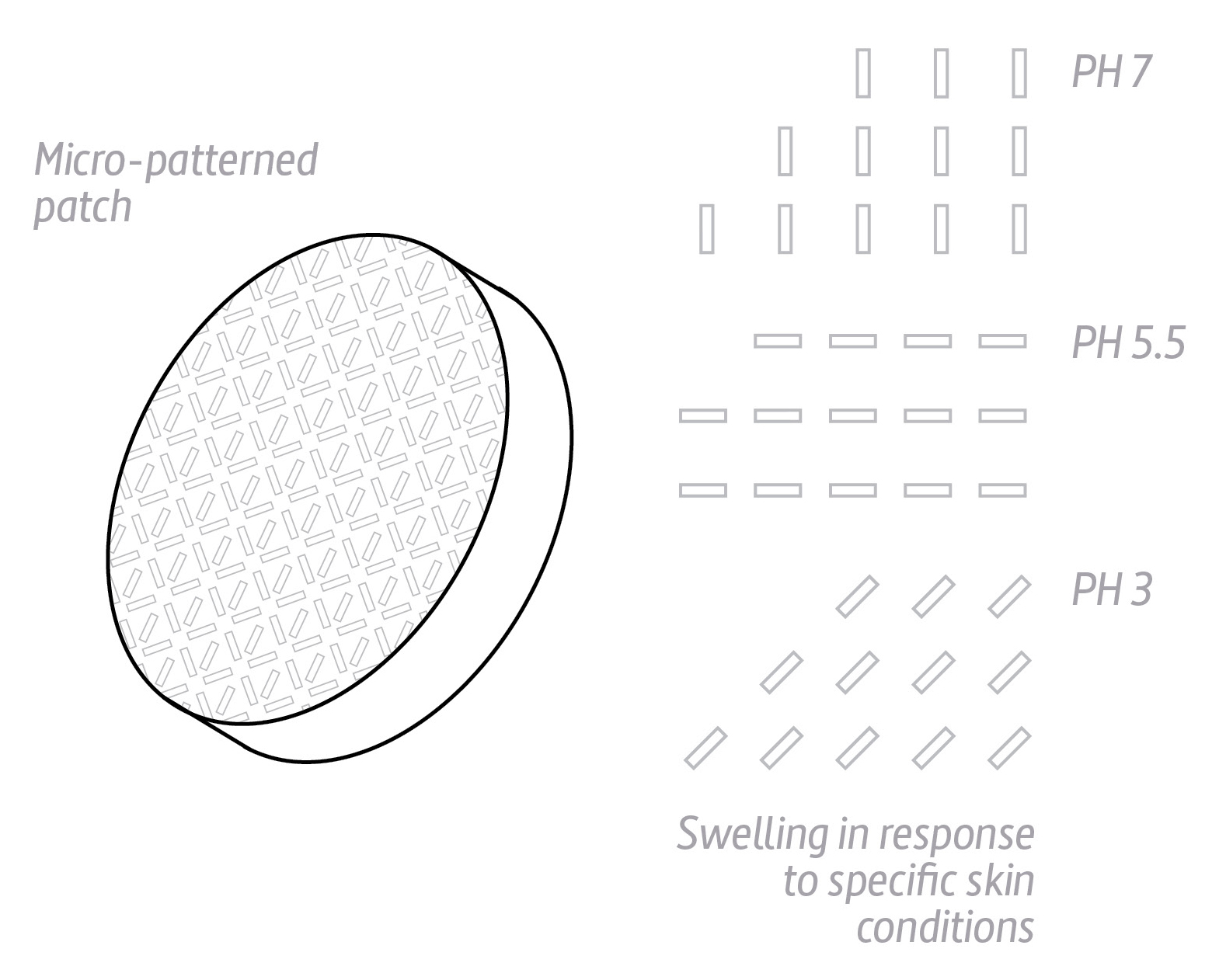Design research project developed at Northumbria University in collaboration with industry stakeholder.
Biomimetic principles for programmable shape change
Taking inspiration from the dynamic hygroscopic behaviour of the pine cone, I designed printing patterns as functional elements for programmable shape change.
Each pine scale is composed of 2 layers, both made of a soft matrix and stiff cellulosic fibres, differently orientated. Changes in environmental moisture activate the dynamic behaviour. The bottom layer soft matrix swells and shrinks in response to these stimuli, forcing the whole scale to adapt and bend.
Drawing on these biomimetic principles I explored how moisture responsive materials similar to hydrogels could be used in conjunction with specifically designed geometric patterns to generate reversible 4D shape change behaviours on 2D printed surfaces. In humid conditions the hygroscopic materials swell, forcing the inert bases to bend and fold in a matter of 2 to 5 minutes.
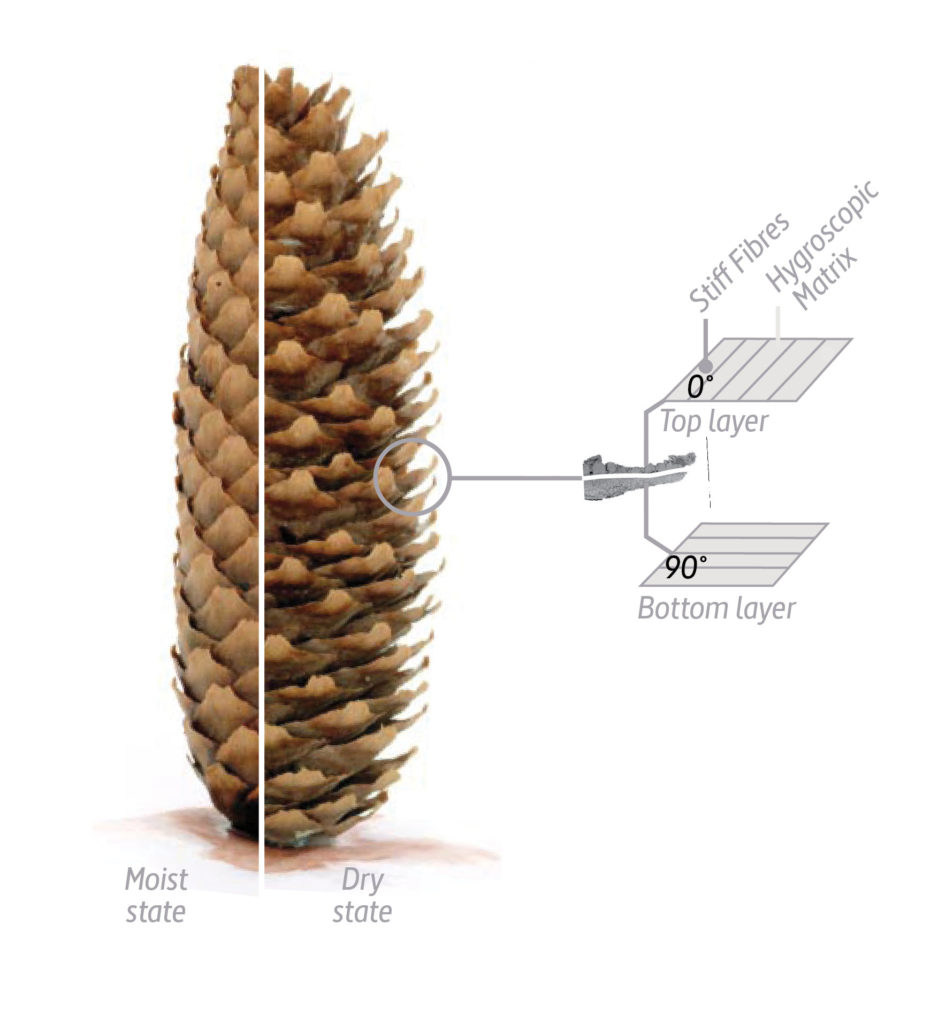

Shape change printed patterns


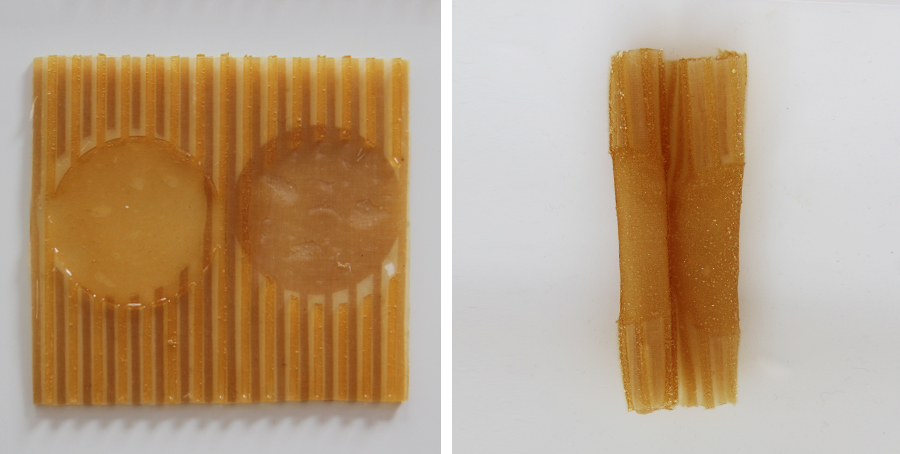


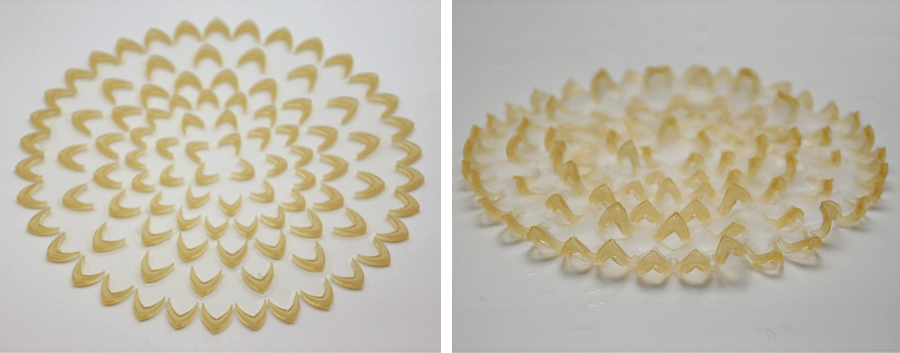
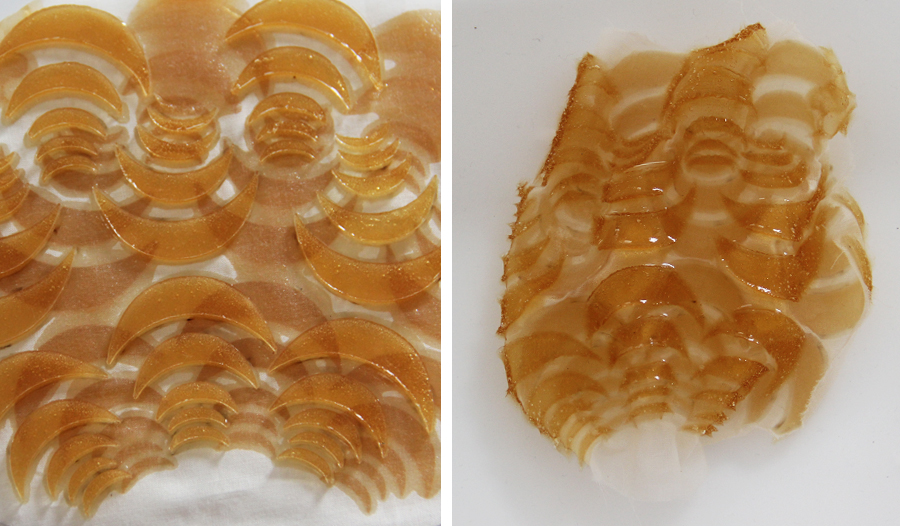
Hydrogel-based active sensing surfaces
Building on the first-hand material exploration and the literature review of cutting-edge applications of hydrogels, I designed skin-based product scenarios exemplifying the potential applications of this soft material in existing and future consumer products.
Hydrogels can respond to a range of environmental and skin conditions (such as Ph, humidity, bacterial presence).
